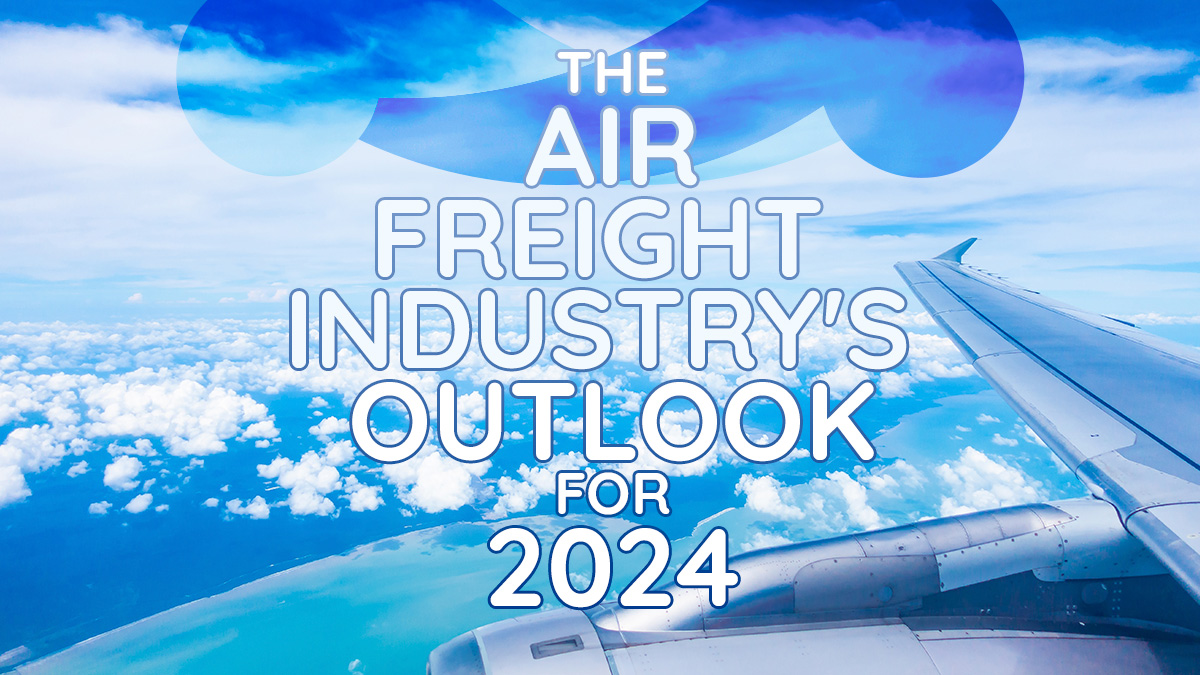Insights into Air Freight Trends for 2024: Navigating Stability and Strategic Shifts
According to Niall van de Wouw, Chief Airfreight Officer of Xeneta, the year 2024 presents an opportunity for shippers to regain their footing after the recent volatility in the air freight industry. The rapid rate decline witnessed earlier in the year has notably subsided in recent months, hinting at a potential stabilization of the market. Van de Wouw underscores that the air cargo sector may have discovered a new baseline, setting the stage for the resurgence of classic seasonality patterns.
In addition to these developments, Xeneta’s data highlights a key theme for 2024 — an increase in capacity coupled with declining rates. The year is poised to witness a notable impact from factors such as environmental sustainability and the quest for improved schedule reliability in ocean freight shipping. These elements are expected to play a pivotal role in shaping the trajectory of the air cargo industry throughout 2024.

The Post-pandemic Shifts
Despite weathering the storm of soaring costs during the Covid-19 pandemic and experiencing sharp declines in 2023, the air freight industry finds itself confronting a 32% increase compared to pre-pandemic levels. This surge presents both challenges and opportunities for industry players.
The market landscape remains intricate, demanding a profound comprehension of global and regional supply chain data. Amidst the complexities, the air freight sector stands at a pivotal juncture, necessitating strategic foresight and adaptability to seize the emerging opportunities while effectively addressing the persisting challenges.
Increasing Trend of Long-term Contracts
In the complex landscape of the air freight industry, the trend toward longer-term contracts is on the rise, posing a double-edged sword for air freight forwarders in 2024. While there’s a natural inclination among forwarders to secure volumes and foster stability through extended contracts, this strategy brings forth its own set of challenges.
The competitive nature of the industry, coupled with the desire to lock in volumes, drives forwarders towards embracing longer-term contracts. However, caution is advised. Xeneta highlights the potential pitfalls, particularly in a scenario where the majority of volume is procured from carriers on the short-term spot market. This dynamic could lead to complications, especially if rates experience unexpected rises. As forwarders seek equilibrium in navigating the intricacies of long-term contracts, a delicate balance becomes essential to ensure resilience in the face of evolving market conditions.
Impact of the Ocean Freight Sector
Niall van de Wouw emphasizes the critical importance of the air freight industry maintaining a vigilant gaze on the ocean freight sector. Given that a staggering 97% of global containerized goods are transported by sea, any disruptions in the container shipping industry can ripple into opportunities for the air freight domain.
Although there is an observable improvement in ocean reliability, it’s essential to acknowledge that unforeseen events such as a drought in the Panama Canal or geopolitical conflicts have the potential to swiftly reshape the air freight landscape. This strategic insight underscores the interconnectedness of the two freight domains, prompting industry players to stay agile and responsive to external factors that might influence the dynamics of air cargo.
Global Air Freight Market Insights
1. Middle East and Africa: A dynamic growth fueled by rising demand for oil, mining, and construction equipment characterizes the air freight market in this region.
2. North America: Surging demand for hi-tech appliances and increased capital expenditure (Capex) contribute to the upward trajectory of North America’s air freight market.
3. Europe: The European air freight market sees substantial growth, driven by the demand for pharmaceuticals, medical equipment, and the thriving automobile industry.
The comprehensive study provides a detailed overview of the competitive landscape, shedding light on the capacities and recent activities of major players who are instrumental in shaping the market dynamics.
Key Players in the Air Freight Sector
The key players in the air freight sector for this year are as follows.
- Deutsche Post AG
- DSV A/S
- Expeditors International of Washington, Inc. (NASDAQ: EXPD)
- Kintetsu World Express (I) Pvt. Ltd.
- CEVA Logistics
- DB Schenker
These industry giants are at the forefront, influencing the trajectory of the global air freight market. The analysis encompasses a meticulous examination of their competitive strategies, capacities, and recent engagements such as mergers, acquisitions, investments, capacity expansions, and plant turnarounds. Stay informed about the driving forces shaping the future of air freight by keeping an eye on these major players.
Wrapping up 2024
As the air freight industry stands at a crossroads, signs of stability emerge, yet the potential for unexpected events remains. Van de Wouw warns of the uncertainty, saying, “If we do get a black swan event in 2024, then strap yourselves in for another ride on the rollercoaster.” The future of air freight promises an uncertain yet promising journey, akin to a rollercoaster ride.



